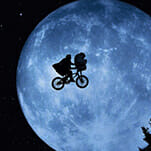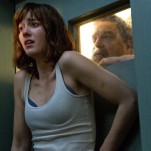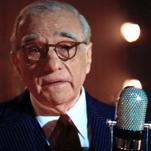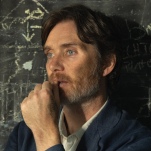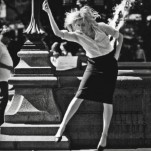The Form of Ferrari
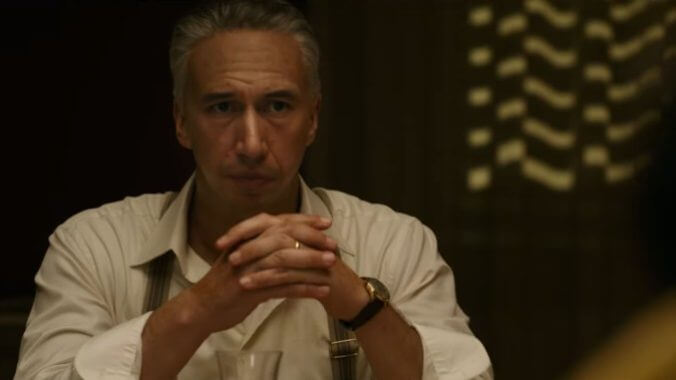
Wheel spokes turn, first on the left of the screen, then the right. Swinging, scratchy music guides the scene as we watch the cars roll off the starting line. The first three shots of Ferrari, Michael Mann’s long-awaited portrait of the eponymous motorsport magnate, can’t take up much more than a second and a half. The grainy archival images of the Golden Era of Grand Prix racing, blended with a digital Adam Driver as a young Enzo Ferrari, flow in that “rhythmic montage” that one of Mann’s cinematic heroes, Sergei Eisenstein, so scientifically described almost 100 ago as film form was just getting its footing. One could chalk the style up as a brief homage, or take it seriously as a statement of political intent.
Mann’s narratives are sometimes reduced to being melodramatic tales of cops and robbers, or critiqued for his apparent obsession with highly professional, passionate and aloof men. But at the foundation of these stories—whether they are about a freelance gem thief, tobacco industry whistleblower or all-time-great boxer—is a systemic analysis: Mann is interested in the way things work. It is also the element that is most easily missed in his narratives. While the Soviet pioneer Dziga Vertov would pull the camera back, revealing the machinery of the modern world by making humans small and looking at patterns rather than specificity, Mann’s camera is always tight, intimate, in close-up.
From the beginning, Mann has always put the human first to reveal the institutional failings. We are kept in the prisoners’ perspective in The Jericho Mile (1979). In Thief (1981), we see the failure of American justice not through its broad implications but in a personal experience of bureaucracies official and unofficial. We don’t see the stirring masses like in Eisenstein’s Strike! (1925) or October (1928), but we are shown the juxtapositions, the contrasts—that unifying movement of editing that strings images beyond their individual implications and into new, symphonic meaning.
Take, for example, how Ferrari opens after the black-and-white prelude: Scenes of a cool morning bathed in that yellow Emilian sun, cutting through the light haze and tall trees of the Po Valley. The lowlands fade to hills, the hills fade to bodies in a bed, the awakening Enzo poetically arising from the earth. He tries to make his exit secret, gently pulling the sheet over his still-sleeping son before pushing his humble hatchback down the driveway. Then the engine fires, and the rest of the world wakes up too—Ferrari’s mechanical modernity punctures the quiet of the natural world.
The camera stops its smooth pans, taking on the vibrations of powering pistons; the tonality of the editing shifts from gliding to stark. Every action is emphasized: Cut-to clutch in, brake, cut-to gear shift, cut-to gas in, clutch out, road ahead. Mann’s tight montage is as clicky as a gated gear shifter, conveying through image and sound not just the experience of driving, but how it works. This pedagogical approach drives Ferrari’s early scenes, with each fleeting instance of automobile piloting building up our understanding of their functions and limits as the film races towards the infamous Mille Miglia of 1957.
The plot of Ferrari, like so many Mann movies, is deceptively simple: “Win on Sunday, sell cars on Monday.” But if it wasn’t ripped from history, recounted by American motor journalist Brock Yates in his biography on Enzo, and adapted by Troy Kennedy Martin for the screen, the whole thing would be too dramatic to be true. Not only is Ferrari going broke, his wife Laura (Penélope Cruz) is on the cusp of finding out about his mistress, Lina Lardi (Shailene Woodley), and their illegitimate son, Piero (Giuseppe Festinese), all around the one-year anniversary of the death of Dino, Enzo and Laura’s own son.
-

-

-

-

-

-

-

-

-

-

-

-

-

-

-

-

-

-

-

-

-

-

-

-

-

-

-

-

-

-

-

-

-

-

-

-

-

-

-

-


